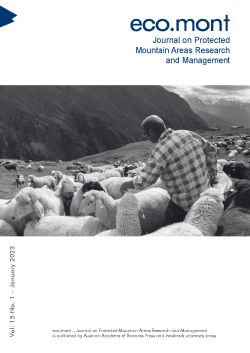
Eco.mont Vol. 15 Nr. 1, pp. 11-24, 2022/12/27
Journal on Protected Mountain Areas Research and Management

This study quantified the mountainscape transformation and identified its drivers over the last two decades in the Ado-Awaye Mountains, Nigeria, a protected mountain area in Oyo State, managed by the State government in conjunction with communal efforts. This potential mountain tourism destination is home to a suspended lake. A supervised classifier algorithm, a post-classification method, landscape metrics and indigenous knowledge (through interviews and questionnaires) were used to determine the patterns, dynamics, fragmentation and drivers of the mountainscape. The results revealed that the rock outcrop / bare ground / built-up areas and open secondary forests covered the greatest and smallest landmasses of the entire area in the study periods (2000 and 2019), both showing an increase. Mountainscape fragmentation also increased. Three categories of underlying drivers (cultural, natural and technological) contributed to mountainscape transformation and fragmentation in the Ado-Awaye Mountains. Forest restoration programmes and eco-friendly approaches are recommended to improve the destination’s serenity and mitigate the environmental impact of the underlying drivers.
Keywords: Ado-Awaye Mountains, transformation, fragmentation, landscape metrics